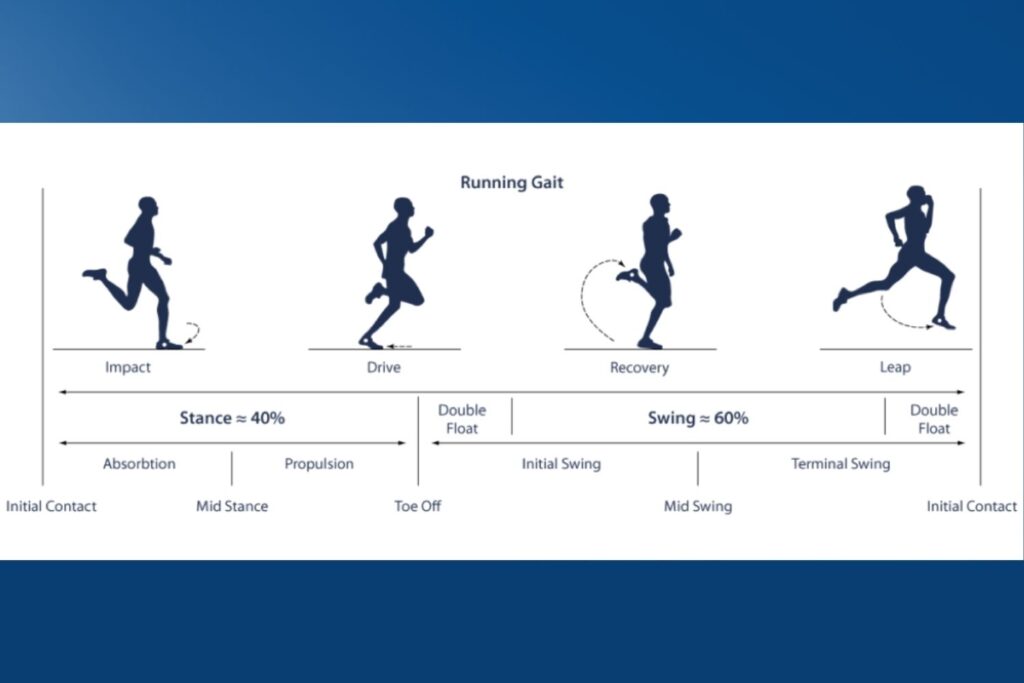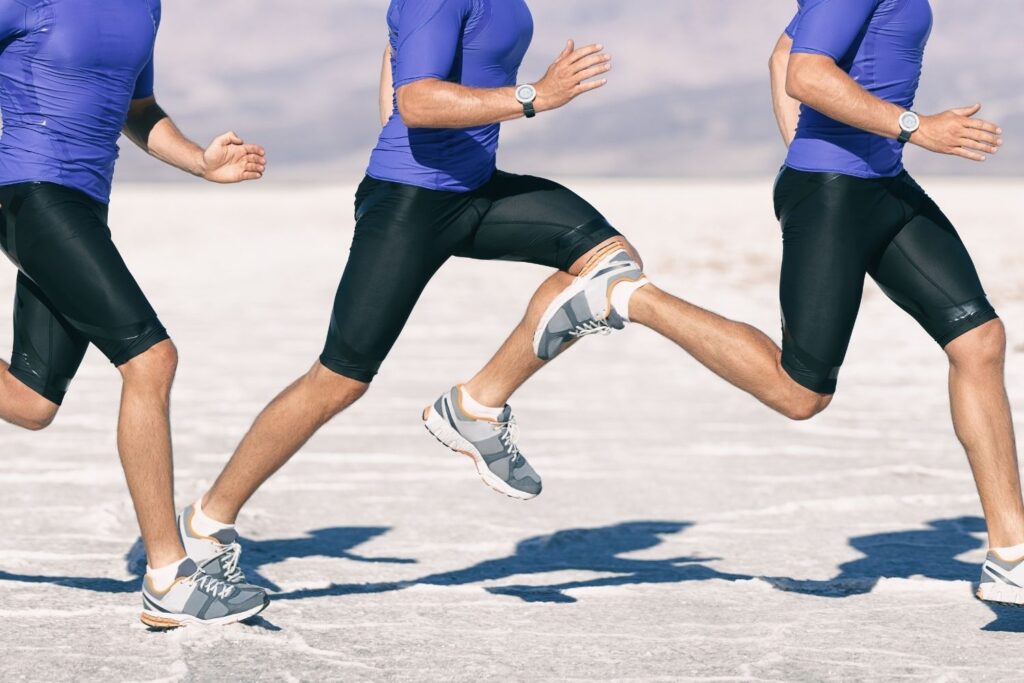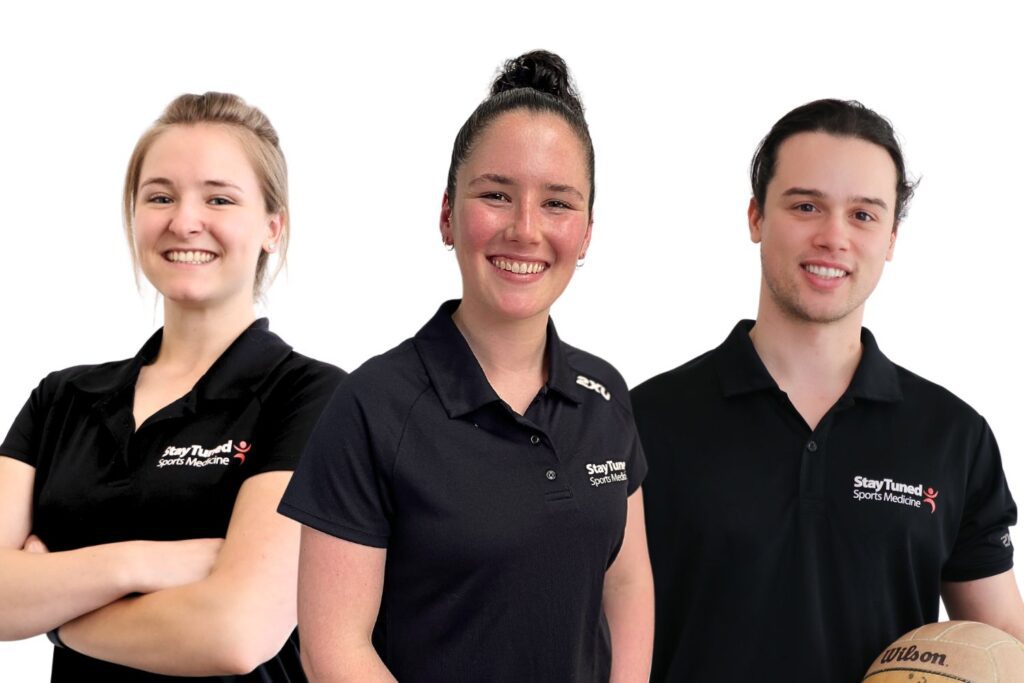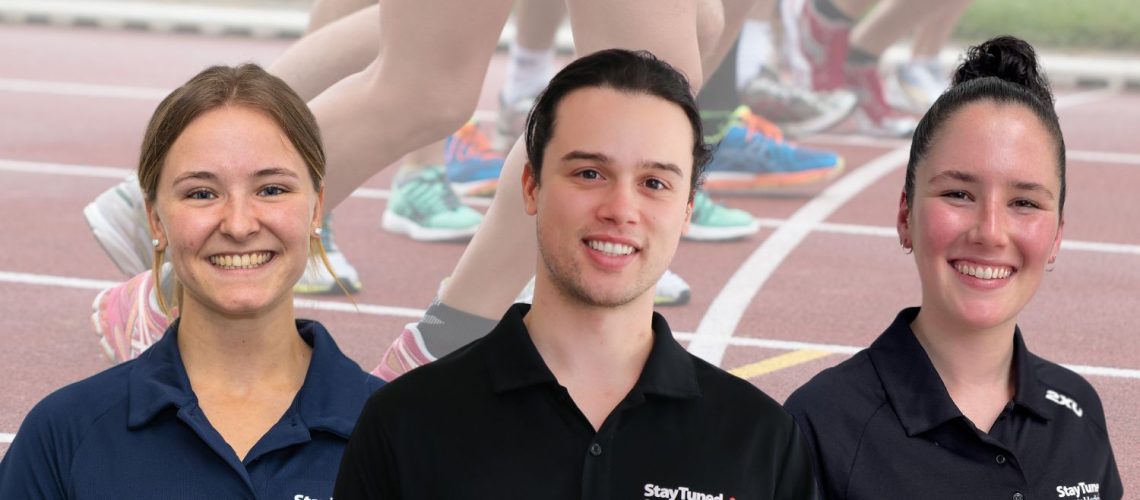Authored By Dr Amy Welsh, Dr Gabriel Pitrone & Dr Emily Sandman
Osteopaths @ Stay Tuned Sports Medicine Elwood
Gait analysis is like having a personal detective for your movement. It’s an essential tool that evaluates your walking or running motion and examines your movement patterns, forces, and joint angles to reveal any abnormalities or imbalances causing pain or impacting your movements.
The Main Difference Between Walking and Running
Gait analysis breaks down walking and running into phases. Each phase has unique characteristics and joint movements that provide a complete picture of your gait;
- When you walk, one foot is always in contact with the ground.
- When you run, there’s a magical moment when both feet are airborne simultaneously! This’ float or flight phase’ helps you speed along the path by allowing more movement in your hips and knees, increased muscle activity, and higher ground reaction forces.

Why is this important? Understanding the mechanics of your walking and running gait is crucial due to its significant impact on your body. It affects the biomechanics of your foot, ankle, knee, hip, and lower back, increasing the risk of injuries and hindering your overall pace and performance. These factors play a vital role in assessing your current goals and are essential for a comprehensive clinical picture.
Key Factors in Gait Analysis
1. Posture & Range of Motion
Your posture and range of motion during standing, walking, and running provide valuable insights into muscular imbalances, joint restrictions, and injury risks. They also shed light on the efficiency of your movement patterns. When evaluating your gait, we consider various questions. For example;
- Do your knees knock together, or do your feet roll excessively inward or outward (overpronation or underpronation)? Joint misalignment can lead to inefficient gait and movement patterns, disrupting your stride and slowing you down.
- Is there symmetry in hip motion as each foot hits the ground? Muscle imbalances and compensatory movements can cause specific muscles to overwork while others are underutilised, leading to fatigue, reduced performance and injuries.
- How many steps do you take per minute? A lower cadence (steps per minute) indicates you are taking longer strides, which increases the impact load on your lower body and the risk of common running-related injuries like runner’s knee.
- Do you overstride so your foot lands too far in front of you? This causes a braking effect that slows you down and requires more effort to propel yourself forward. On the other hand, understriding means you are not utilising your full potential with each step.
- Do you excessively bounce (known as “vertical oscillation”) in between each running stride? This wastes energy as each bounce lifts your body upwards instead of moving it efficiently along the ground.

2. Footwear
Wear patterns in your footwear can show us how your foot moves and impacts the ground. They can show where your foot is most impacted and whether you require extra support or cushioning using orthotics or targeted strengthening exercises. For example;
- Under Pronators (high arches): will show increased wear on the outside of their shoe.
- Overpronators (flat feet or collapsing arches): There will be increased wear on the inside of their heel, under the ball of the foot and the big toe.
- Neutral: S-shape wear pattern. There will be increased wear on the outer heel and even wear through the forefoot and big toe.

3. Capacity and load
Capacity refers to your body’s ability to handle physical activity, influenced by factors like muscle strength, cardiovascular fitness, flexibility, and recovery ability. Load encompasses the volume, frequency, and intensity of your training. Balancing these elements through progressive overload, periodisation, and individualised training plans is essential to enhance performance and prevent injuries.
How Can We Help?
Understanding and addressing these factors is crucial for enhancing movement, boosting performance, and staying injury-free. Our step-by-step approach to improving your gait involves a structured plan to address any identified issues or inefficiencies.

This will look different for every person and will be customised based on your needs and goals, but may include the following:
- Video gait analysis to provide visual feedback and track your progress over time.
- Tailored individual exercise programs to address specific weaknesses and imbalances. For example, you may need to strengthen gluteal muscles to support movement patterns and flexibility exercises to improve hip joint range of motion.
- Measuring your cadence (steps per minute) using a metronome to promote a more efficient stride.
- Practising running or walking in front of a mirror to correct form and ensure symmetry.
- Providing specific verbal cues to help modify foot strike patterns.
- Education on gait mechanics and how it impacts overall health and performance.
- Tips to maintain good posture during running, walking, and everyday activities.
- Follow-up appointments to monitor your progress and adjust your exercise program and gait technique to ensure continuous improvement.
By understanding and optimising your gait, you can run faster, more efficiently, and with reduced risk of injury. Let our professional osteopaths help you achieve your running goals today!

Osteopaths @ Stay Tuned Sports Medicine Elwood
Learn more about nutrition for running, barefoot running and more here.
External Resources:

